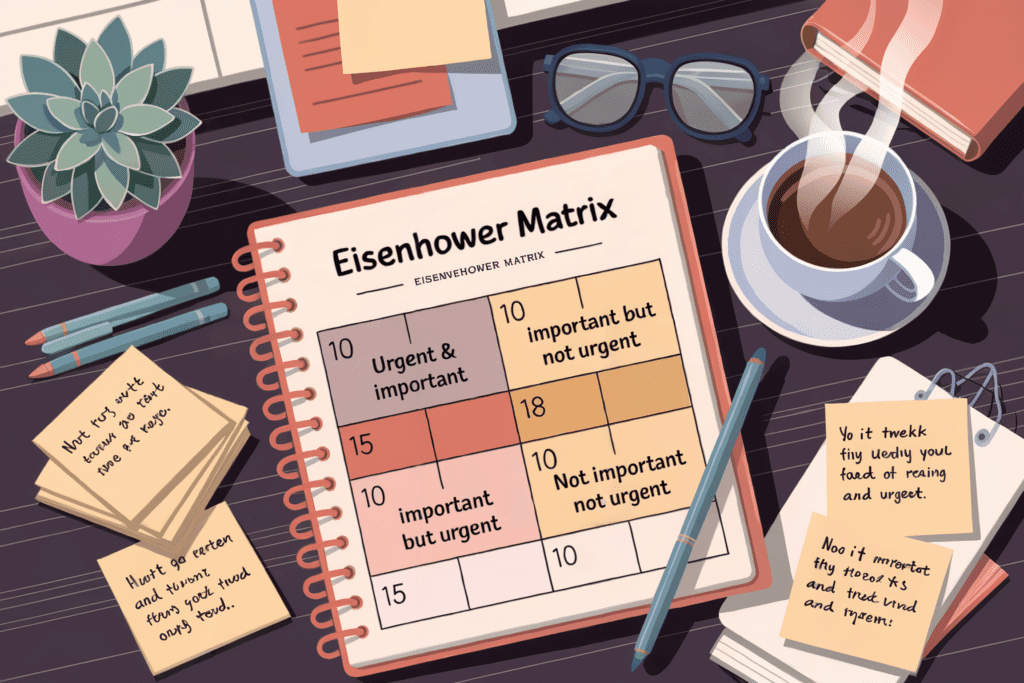Introduction
Spring is a season of renewal. As the days grow longer and the air feels fresher, many of us engage in the time-honored tradition of spring cleaning. We declutter our homes, refresh our wardrobes, and reorganize our living spaces. But what about our minds? Just like our physical environments, our thoughts and emotions can become cluttered over time, making it difficult to focus, relax, and live with intention. It’s essential to address mental clutter to achieve clarity and peace.
This guide will walk you through a mental spring cleaning process, helping you declutter your mind for better focus, reduce stress, and create space for growth and positivity. Whether you struggle with anxiety, overthinking, or simply feel mentally exhausted, these steps will help you embrace a fresh start this season by letting go of mental clutter.

Understanding Mental Clutter
Before we dive into solutions, it’s important to define mental clutter. Just like a messy desk can make it difficult to work efficiently, a cluttered mind can lead to indecisiveness, stress, and exhaustion. Mental clutter includes:
- Unfinished tasks lingering in your mind
- Negative self-talk and limiting beliefs
- Unresolved emotions that drain energy
- Information overload from social media and news
- Worries about the past or future
Clearing mental clutter is essential for improving focus, reducing stress, and fostering emotional well-being. Let’s explore effective techniques to help you achieve a more peaceful and organized mind.
Step 1: Identify Your Mental Clutter
The first step in mental decluttering is self-awareness. Take time to reflect on what’s causing stress or mental exhaustion. Ask yourself:
- What thoughts frequently occupy my mind?
- What worries or fears keep resurfacing?
- Are there unresolved conflicts draining my energy?
- Do I feel mentally overwhelmed by social media or daily obligations?
Journaling is an effective way to identify mental clutter. By writing down your thoughts, you gain clarity and perspective, making it easier to let go of what no longer serves you.
Step 2: Let Go of Limiting Beliefs and Negative Thoughts
Many of us hold onto beliefs that no longer align with our growth. Thoughts like “I’m not good enough” or “I always fail” can create a mental roadblock. These limiting beliefs are a major source of mental clutter.
To challenge these thoughts, try cognitive reframing:
- Identify a negative belief (“I’m not successful enough”)
- Replace it with a more constructive thought (“Success looks different for everyone, and I am making progress in my own way”)
- Practice affirmations to reinforce positive beliefs
Letting go of mental clutter often starts with changing how we talk to ourselves.
Step 3: Reduce Information Overload
In today’s digital world, we are constantly bombarded with information. Social media, emails, news, and notifications compete for our attention, leading to cognitive overload. Reducing this influx can significantly declutter your mind for better focus.
Ways to Cut Down on Information Overload:
- Limit social media use – Set designated times for scrolling and avoid excessive consumption.
- Unsubscribe from unnecessary emails – Keep only what truly adds value to your day.
- Set boundaries with notifications – Turn off alerts that are not essential.
- Practice digital detox days – A break from screens can work wonders for mental clarity.
By reducing unnecessary inputs, you create more space for intentional thinking and creativity.
Step 4: Organize Your Thoughts with a Mind Dump
When our thoughts feel overwhelming, a great technique to use is the mind dump. This involves writing down everything that’s on your mind—worries, to-dos, ideas, and feelings—without overthinking.
How to Do a Mind Dump:
- Grab a journal or open a blank document.
- Set a timer for 10-15 minutes.
- Write everything that comes to mind, no filtering.
- Review and categorize—what needs action, what can be let go, and what just needed expression.
This technique reduces mental clutter and helps you prioritize what truly matters.

Step 5: Set Clear Priorities
Mental clutter often stems from feeling pulled in multiple directions. One way to counter this is by setting clear priorities.
The Eisenhower Matrix for Prioritization:
This simple tool helps you organize your mental clutter by dividing tasks into four categories:
- Urgent & Important – Tasks that require immediate attention (e.g., deadlines, critical issues)
- Important but Not Urgent – Long-term goals and growth-oriented tasks (e.g., learning, self-care)
- Urgent but Not Important – Tasks that feel pressing but don’t contribute to goals (e.g., unnecessary meetings)
- Not Urgent & Not Important – Distractions that can be eliminated (e.g., excessive social media use)
By using this method, you declutter your mind by focusing on what truly needs your attention.
Step 6: Create a Mindfulness Routine
One of the best ways to prevent mental clutter from building up again is through daily mindfulness practices. Mindfulness allows you to stay present, reducing anxiety about the past or future.
Simple Mindfulness Exercises:
- Deep breathing – Try the 4-7-8 technique (inhale for 4 seconds, hold for 7, exhale for 8)
- Body scan meditation – Helps release tension and increase awareness
- Daily gratitude journaling – Write down 3 things you’re grateful for each day
- Mindful walking – Focus on your surroundings and breath while walking
Practicing mindfulness daily helps maintain mental clarity and emotional balance.
Step 7: Declutter Your Physical Space
Your physical environment affects your mental state. A cluttered space can contribute to mental clutter and make it harder to focus. As part of your mental spring cleaning, consider tidying up your surroundings.
Decluttering Tips:
- Clean your workspace to enhance productivity
- Organize your home to create a peaceful atmosphere
- Remove unnecessary visual distractions
- Keep a minimalist mindset—less clutter, less stress
A tidy space often leads to a clearer mind and reduced anxiety.
Conclusion: Embrace a Fresh Start
Mental spring cleaning is just as important as physical decluttering. By identifying and releasing mental clutter, reducing information overload, and implementing mindfulness practices, you create space for clarity, peace, and personal growth.
This season, take the time to refresh your mind. Small, intentional changes can lead to lasting mental well-being. So, grab your journal, take a deep breath, and start your journey toward a clutter-free mind.
Did you find these strategies helpful? Share your thoughts in the comments below and let us know which mental decluttering techniques worked best for you!



